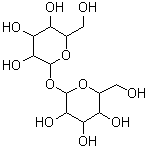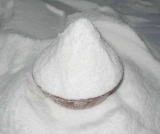Trehalose
-
- Category :
Food and Feed additives
- CAS NO : 99-20-7
- EC NO : 202-739-6
- Molecular Formula : C12H22O11
- Main Specifications : 98% min
- Synonyms : Trehalose;alpha-D-Trehalose;alpha-D-glucopyranosyl alpha-D-glucopyranoside;Trehalose;D(+)Trehalose;D-(+)-Trehalose;��-L-glucopyranosyl;��-D-glucopyranoside;Trehalose anhydrous;
Package: Packing: 20 kg bag
Uses : Trehalose is a nature sugar, not only exists in the form of free sugars, but also as a part of all kinds of glycolipid. The latest study showed that exogenous trehalose also has good nonspecific protection for biology and biological macromolecules. In rec
Molecular Structure:

Product description:
D-Trehalose anhydrous
Trehalose
Molecular Formula: C12H22O11
Molecular Weight: 342.30
CAS: 99-20-7
EINECS: 202-739-6
Appearance: White crystal with a sweet taste, virtually odorless.
Properties: solubility in water, soluble in hot ethanol, insoluble in ether. Low cariogenicity, Mild sweetness, Low solubility and excellent crystalline, High Glass Transition Temperature
Application: Trehalose is a nature sugar, not only exists in the form of free sugars, but also as a part of all kinds of glycolipid. The latest study showed that exogenous trehalose also has good nonspecific protection for biology and biological macromolecules. In recent years, more and more tests show the various effects of trehalose applied in cosmetics. Trehalose has good compatibility, stability, and can be added to any cosmetics
Packing: 20kg net bag
Standard: FCC IV,USP34
Product name D(+)-Trehalose dihydrate
Item Specification
Description White crystal with a sweet taste, virtually odorless
Assay Not less than 98%
Loss on drying Less than 2.0% (60, 5h)
Total ash Less than 0.06%
Lead Less than 1mg/kilo
Arsenic Less than 1mg/kilo
Coliform Less than 30 MPN/100g
pH 5.0 - 6.7
Total aerobic counts Less than 400 CFU per gram
Salmonella Negative
